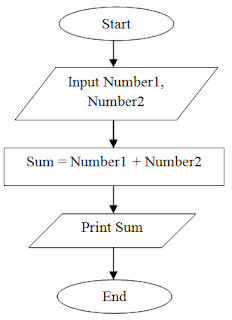Programming is evolving nowadays. Every people want to learn to code and wants to achieve their dreams. If you are a beginner in programming then these basic programming terms help you to understand programming concepts fast.
Basic Programming Terms
1. Variable
Variable is nothing but a container to store data. It is an address to a memory location where data and identifiers. That data may have different types (data types) like integer, String, Character, Array type, object type, and much more. Variable is building block any programming language.
2. Data types
A data type is nothing but which type of data you are storing it may be an integer, character, string, and more which helps in telling the compiler or interpreter what type of this data and how much memory should allocate to that data. Different data types have different sizes. Data types may vary from language to language but some of them are int (Integer Type), char (Character Type), Boolean (True-False Type), and many more.
3. Compiler
Various languages have their own compiler. The main work of the compiler is that convert the formal code to machine code because computers understand machine language. The compiler also throws errors and warnings.
4. Interpreter
An Interpreter is a computer program that directly executes means instruction written in a programming language that does not need to compile previously.
5. Assembler
Assembler is the program that converts code or translated assembly code into machine code. Some users may also refer to assembly language or assembler language as an assembler.
6. Debugging
In simple language, debugging is find bugs and solving them. Programmers may use different debugging tools.
7. Machine Language
The computer doesn't understand our formal languages like English, Hindi, or Gujarati. A computer only understands machine language and that is binary. There are two bits 0 and 1 are available in this language. It’s called Binary Bits. These two bits are used as True or False, Yes or No, On or Off, or simply One or Zero.
8. Constants
Constants are similar to variables, the only difference is that the value that assigns to constant is unchangeable throughout the code while the variable is changeable means we can reassign value to it.
9. Pseudocode
Pseudocode (pronounced SOO-doh-kohd) is a simple block code description to understand the logic. It may be written in a formal language or just a main logic snippet from the whole code.
example,
If a student's grade is greater than or equal to 60
Print "passed"
else
Print "failed"
endif
10. Algorithm
An algorithm is a step-by-step solution to the problem. It may be written in formal language but step by step not like Pseudocode or may write in simple code style.
11. Flowcharts
A flowchart is a graphical representation of the problem. There are various symbols to represent the problem. Different shapes have their own meaning.
example,
12. API
Application Programming Interface (API) is a set of protocols, rules, routines that help you to build a software application. APIs help you to communicate with a third party or other services and programs. These services are helpful to build software.
13. Scope
Scope decides where to access variables and where not in the code. The scope of the variable is important because some variables are not used globaly. The scope decides this variable is only valid inside this piece of code unless globally. The scope is beneficial for memory management. There are two types of scope Local and Global.
14. IDE
Integrated Development Environment or simply say IDE is a tool or rich text editor to right code. IDE has various features like compile code, auto complete code, formatter, debugger, and more.
15. Syntax
It is a very common term but still, this is used most in programming because you need to must follow their set of rules for creating a program. And this set of rules is known as syntax.
16. Data Structures
A data structure is a way to store data. It is a way to store data efficiently and make your code optimal. It is not a programming language but it is a way to make your code optimal. Some basic data structures include arrays, and some more complex ones are record, tree, list, stack, queue, and much more. You can't this data structure is perfect, any data structure is designed to organize data to suit a specific purpose so that it can be accessed and worked in inappropriate ways. In programming, a data structure may be selected or designed to store data for the purpose of working on it with various algorithms.
17. Class
Classes are essentially user-defined data types. Classes are where we create a blueprint for the structure of methods and attributes. Individual objects are instantiated, or created from this blueprint. It is an Object-Oriented Programming concept
18. Object
We know what is Class. The object is the instance of the class. Like variable but type of that variable is a type of Class that we create.
19. Functions or Methods
A function is nothing but a block of code that is reusable in code by calling that function.
20. Loops or iterations
Loops or iterations is a sequence of instruction s that is continually repeated until a certain condition is reached.
21. Condition
Condition is nothing but a condition for getting specific output on the specific conditions. For example, age must be greater than and equal to 18 (age>=18).
There are lots of terms in programming but as a beginner, these are enough for now. Now share with your friends.


0 Comments
Post a Comment